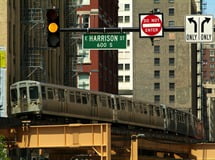Category:
ArticlesThe clustered approach in Chicago differs from the way cameras are used in many cities, says Shah, who studies legal and policy implications of communication technologies.
“The idea championed by former mayor Richard Daley of placing a camera on every corner results in the vast majority of those cameras having little or no impact on reducing crime,” he said.
Shah and co-author Jeremy Braithwaite, a doctoral student at the University of California-Irvine, analyzed two previous studies – one by students at Northwestern University and the other by the Chicago Police Department – that investigated the effectiveness of Chicago’s surveillance network.
Their analysis indicates that the initial crime level of an area where a camera was placed had a significant effect on the camera’s overall impact. Cameras in high-crime areas were associated with large reductions in crimes, while medium- to low-crime areas experienced minimal change.
“The act of placing cameras in high-crime areas pushes the police to focus their efforts in these areas, thus reducing crime,” Shah said.
Further research with experimental controls will be needed to separate out the effects of other policing efforts and to isolate the catalyst effect of cameras, Shah said. Technological advances may also help measure the benefit that cameras provide.
“Cameras have limitations,” Shah said. “They are only as good as their technology and the person watching the camera.”
Click to Bookmark Post
Post Bookmarked
22.3
C
Sydney
17
C
Canberra
25
C
Darwin
13.5
C
Hobart
19.2
C
Perth
19.3
C
Brisbane
16
C
Auckland
25.8
C
Melbourne










